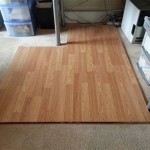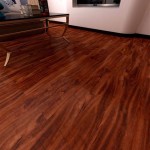Wood Boiler for Radiant Floor Heat: A Comprehensive Guide
Radiant floor heating systems offer a comfortable and efficient way to heat a home. Unlike forced-air systems that blow hot air, radiant systems warm the floor, which then radiates heat evenly throughout the space. One effective way to power these systems is with a wood boiler. This article explores the benefits, considerations, and operational aspects of using a wood boiler for radiant floor heating.
Benefits of Using a Wood Boiler for Radiant Floor Heat
Wood boilers offer several advantages for powering radiant floor heating systems:
- Cost Savings: Wood is often a more affordable fuel source than electricity, propane, or natural gas, potentially leading to significant savings on heating bills.
- Environmental Friendliness: Wood is a renewable resource, and burning wood can be carbon-neutral if harvested and managed sustainably.
- Energy Independence: Using a wood boiler reduces reliance on external fuel sources, providing greater energy independence and security.
- Consistent Heat: Wood boilers provide a steady, even heat ideal for radiant floor systems, creating a comfortable living environment.
Types of Wood Boilers
Several types of wood boilers are available, each with its own characteristics and efficiency levels:
- Outdoor Wood Boilers: These boilers are housed in a separate structure outside the main building, requiring insulated piping to connect to the radiant system.
- Indoor Wood Boilers: These boilers are installed inside the home, typically in a basement or utility room, simplifying installation and reducing heat loss.
- Gasification Wood Boilers: These advanced boilers burn wood more efficiently by converting wood gases into usable heat, resulting in less wood consumption and reduced emissions.
Key Considerations for Wood Boiler Installation
Installing a wood boiler for radiant floor heat requires careful planning and consideration of several factors:
- Sizing: Choosing the right boiler size is crucial for efficient operation. An undersized boiler will struggle to meet heating demands, while an oversized boiler can lead to wasted fuel and creosote buildup.
- Location: Proper location is essential for both indoor and outdoor boilers. Indoor boilers require adequate ventilation and clearance from combustible materials. Outdoor boilers must be placed on a non-combustible pad and positioned for easy access for fuel loading and maintenance.
- Chimney and Venting: A properly sized and installed chimney or venting system is critical for safe and efficient boiler operation, ensuring proper draft and exhaust of combustion gases.
- Permits and Regulations: Check local building codes and regulations regarding wood boiler installations and obtain necessary permits before starting the project. Regulations regarding emissions and safety features vary by location.
Integrating the Wood Boiler with the Radiant Floor System
Successfully integrating the wood boiler with the radiant floor system involves several key components:
- Heat Exchanger: A heat exchanger transfers heat from the boiler water to the water circulating in the radiant floor system. This prevents the boiler water from directly entering the floor system, protecting it from corrosion and other issues.
- Circulation Pump: A circulator pump moves the heated water through the radiant floor tubing, ensuring even heat distribution throughout the floor.
- Expansion Tank: The expansion tank accommodates the expansion and contraction of the water in the heating system as it heats and cools, preventing pressure buildup and potential damage.
- Controls and Thermostats: Thermostats and control systems regulate the boiler operation and water temperature, maintaining the desired indoor temperature and optimizing fuel efficiency.
Operation and Maintenance of Wood Boilers
Proper operation and maintenance are essential for safe and efficient wood boiler performance:
- Fuel Selection: Use seasoned, dry hardwood for optimal burning efficiency and reduced creosote buildup. Avoid using softwoods or treated lumber.
- Loading and Firing: Proper loading techniques ensure complete combustion and minimize smoke production. Follow manufacturer instructions for optimal loading and firing procedures.
- Ash Removal: Regularly remove ash from the boiler to maintain efficient combustion and prevent ash buildup, which can restrict airflow and reduce heat output.
- Chimney Cleaning: Regular chimney cleaning is crucial for preventing creosote buildup, which can lead to chimney fires. Have the chimney inspected and cleaned annually by a qualified professional.
- Annual Maintenance: Perform annual maintenance, including cleaning the heat exchanger, inspecting the pumps and controls, and checking for leaks, to ensure optimal performance and longevity.
Wood Storage and Handling
Proper wood storage and handling contribute to efficient boiler operation and minimize fuel-related issues:
- Seasoning: Allow freshly cut wood to season for at least six months to reduce moisture content, improving combustion efficiency and minimizing smoke.
- Storage Location: Store seasoned wood in a dry, well-ventilated area, protecting it from rain and snow. Elevated storage prevents ground moisture from affecting the wood.
- Handling: Use appropriate tools and techniques for handling firewood to minimize physical strain and ensure safety.
Safety Precautions
Operating a wood boiler involves inherent risks, and safety precautions are essential:
- Carbon Monoxide Detectors: Install carbon monoxide detectors in the home to alert occupants to potential carbon monoxide leaks, a colorless, odorless, and potentially deadly gas.
- Fire Extinguishers: Keep fire extinguishers readily available near the boiler in case of fire.
- Clearances: Maintain proper clearances around the boiler and chimney from combustible materials to prevent fire hazards.
- Regular Inspections: Have the boiler and chimney inspected annually by a qualified professional to identify potential issues and ensure safe operation.

How Heat From A Central Boiler Outdoor Furnace Gets To Your Home Wood Furnaces Of Ohio Llc

I Built A Wood Fired Boiler For In Floor Radiant Heat My Youtube

In Floor Radiant Heat With A Wood Boiler Heating Concrete Floors

Radiant Floor Heat With An Outdoor Wood Boiler

Electric Geothermal And Wood Boilers Diy Radiant Floor Heating

Wood Boiler Meets Modern Hydronics Phcppros

In Floor Radiant Heat With A Wood Boiler Part 2

Electric Geothermal And Wood Boilers Diy Radiant Floor Heating

Radiant Floor Heat With An Outdoor Wood Boiler

Home Made Wood Boiler Heats Huge With In Floor Radiant Heat







